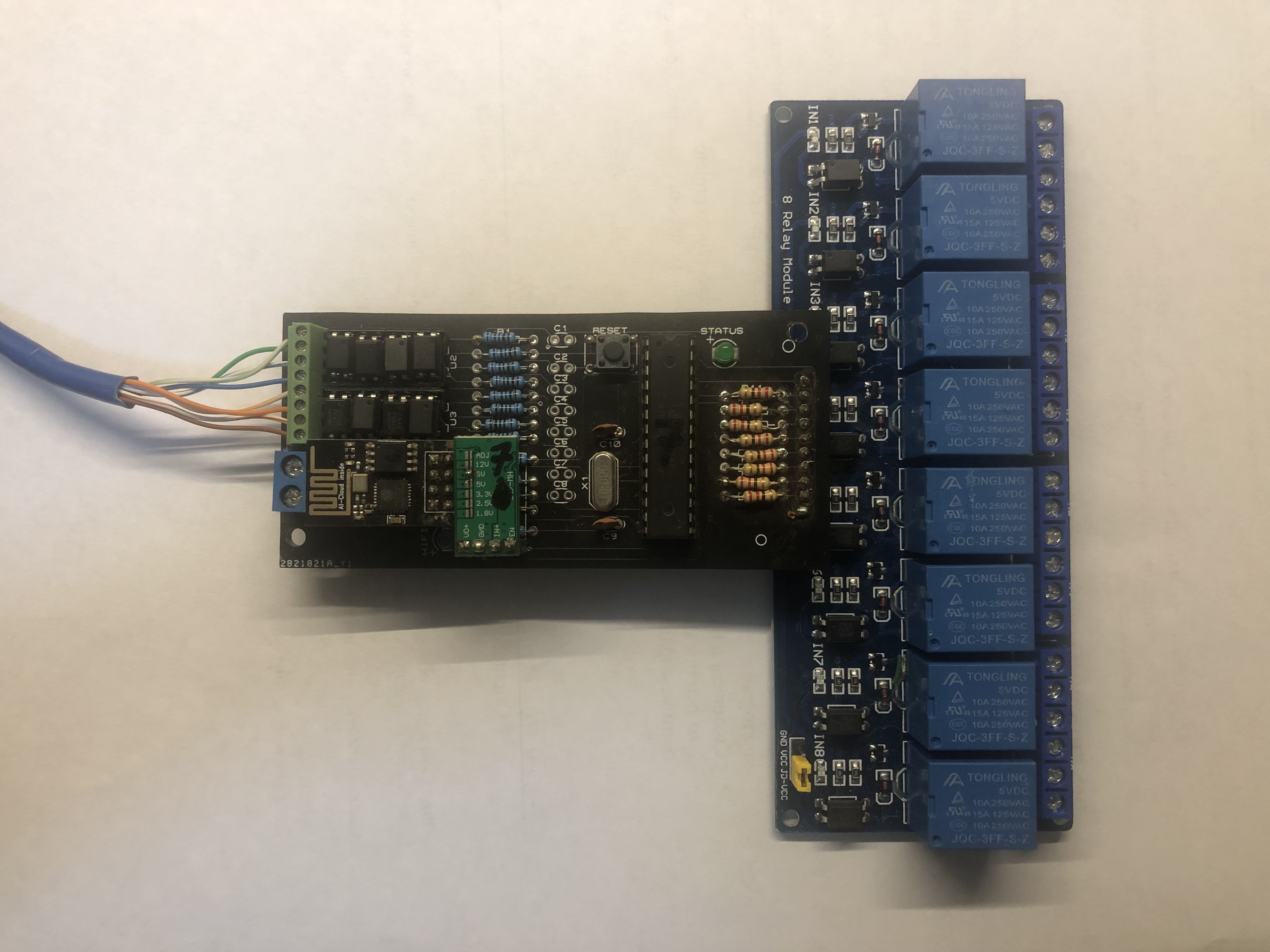Methods and Challenges in Panelizing PCBs
Published on 2/17/2017 6:27:22 PM
Description
<p> <span style="font-size:16px;font-family:"">Printed circuit boards (PCBs) need to be kept secure during the manufacturing, shipping, and assembly processes to avoid damaging the unit.</span> </p> <p> <br /> </p> <p> <strong><span style="font-family:"font-size:16px;"> <span style="font-size:16px;font-family:"">Panelizing PCBs is a way to safeguard their integrity.</span></span></strong> </p> <p> <span style="font-family:"font-size:16px;">In addition, panelization allows PCB manufacturers to assemble multiple boards simultaneously, reducing costs and production time. Panelization must be done properly so that PCBs will not be broken or otherwise damaged during separation.</span> </p> <p> <br /> </p> <p> <em><span style="font-family:"font-size:16px;">Following is a discussion of PCB panelization methods, as well as some challenges that may be encountered.</span></em> </p> <p> <strong><br /> </strong> </p> <p> <strong><span style="font-family:"font-size:16px;">Methods:</span></strong> </p> <p> <strong><br /> </strong> </p> <p> <strong><span style="font-family:"font-size:16px;">1. Panelization</span></strong> </p> <p> <span style="font-family:"font-size:16px;">Panelization, </span><span style="font-family:"font-size:16px;">also known as an array format</span><span style="font-family:"font-size:16px;">, is used to process multiple boards while keeping them together in a single substrate. The process allows PCB manufacturers to </span><span style="font-family:"font-size:16px;">maintain high quality while reducing costs.</span> </p> <p> <strong><br /> </strong> </p> <p> <span style="font-family:"font-size:16px;">The two most common methods of panelization are V-groove panelization and breakaway tab, or tab-route panelization.</span> </p> <p> <br /> </p> <p> <strong><span style="font-family:"font-size:16px;">V-Groove Panelization – </span></strong><span style="font-family:"font-size:16px;">This method involves cutting 1/3 the thickness of the board from both the top and bottom with a 30- to 45-degree circular cutting blade. The remaining board is quite sturdy and is depaneled by machine to avoid stress on the PCB. </span><span style="font-family:"font-size:16px;"> <span style="font-size:16px;font-family:"">V-Groove panelization is used where there are no overhanging components.</span></span> </p> <p> <strong><br /> </strong> </p> <p> <strong><span style="font-family:"font-size:16px;">Tab-Route Panelization - </span></strong><span style="font-family:"font-size:16px;">This method permits placing PCBs of the same or different designs together. Space is left between the <a href="https://www.allpcb.com/mouse_bites_pcb.html" target="_blank">perforated tabs</a> and the traces and surface mounted parts. </span><span style="font-family:"font-size:16px;">This reduces surface stress and avoids splintering.</span> </p> <p> <strong><br /> </strong> </p> <p> <strong><span style="font-family:"font-size:16px;">2. Depanelization</span></strong> </p> <p> <span style="font-family:"font-size:16px;">Depanelization is simply removing individual PCBs from the array. Several different methods are used to depanel PCB arrays:</span> </p> <p> <br /> </p> <p> <span style="font-family:"font-size:16px;">1) </span><strong><span style="font-family:"font-size:16px;">Breaking by Hand</span></strong><span style="font-size:16px;font-family:""> – Only appropriate for strain-resistant circuits.</span> </p> <p> <strong><br /> </strong> </p> <p> <span style="font-family:"font-size:16px;">2)</span><strong><span style="font-family:"font-size:16px;">Pizza Cutter</span></strong><span style="font-size:16px;font-family:""> – Used on V-grooves. Best for cutting very large panels into smaller ones, this method is inexpensive and low-maintenance.</span> </p> <p> <br /> </p> <p> <span style="font-family:"font-size:16px;">3) </span><strong><span style="font-family:"font-size:16px;">Punching</span></strong><span style="font-size:16px;font-family:""> – A two-part fixture punches out single PCBs. Higher capacity, but higher maintenance and cost.</span> </p> <p> <br /> </p> <p> <span style="font-family:"font-size:16px;">4) </span><strong><span style="font-family:"font-size:16px;">Epaneling Router</span></strong><span style="font-size:16px;font-family:""> – Single boards are connected using tabs; the router bit mills out the tabs. Can cut arcs and turn at sharp angles, but capacity is lower.</span> </p> <p> <br /> </p> <p> <span style="font-family:"font-size:16px;">5) </span><strong><span style="font-family:"font-size:16px;">Saw</span></strong><span style="font-size:16px;font-family:""> – Can perform at high feed rates, cutting both V-grooved and non-V-grooved PCBs.</span> </p> <p> <strong><br /> </strong> </p> <p> <span style="font-family:"font-size:16px;">6) </span><strong><span style="font-family:"font-size:16px;">Laser</span></strong><span style="font-size:16px;font-family:""> – Low mechanical stress and precise tolerances, but has higher initial capital outlay.</span> </p> <p> <strong><u><br /> </u></strong> </p> <p> <strong><span style="font-family:"font-size:16px;">Challenges:</span></strong> </p> <p> <span style="font-family:"font-size:16px;">Panelization presents a number of challenges in several areas:</span> </p> <p> <strong><br /> </strong> </p> <p> <strong><span style="font-family:"font-size:16px;">1. Depanelization</span></strong><span style="font-family:"font-size:16px;"> – disadvantages of some depanelization methods:</span> </p> <p> <br /> </p> <p> <span style="font-size:16px;font-family:"">1) Using a router could require additional cleaning prior to shipment. This method produces a lot of dust which must be vacuumed out.</span> </p> <p> <span style="font-size:12px;"><br /> </span> </p> <p> <span style="font-size:16px;font-family:"">2) Saws can only cut in straight lines, so are appropriate only for certain arrays.</span> </p> <p> <span style="font-size:12px;"><br /> </span> </p> <span style="font-size:16px;font-family:"">3) Lasers should be used only with an optimal board thickness of 1 mm or less.</span><br /> <p> <strong><br /> </strong> </p> <p> <strong><span style="font-family:"font-size:16px;">2. Overhanging parts</span></strong><span style="font-family:"font-size:16px;"> – require pre-routing to avoid interference with depanelization:</span> </p> <p> <span style="font-size:12px;"><br /> </span> </p> <p> <span style="font-size:16px;font-family:"">1) Components overhanging an edge can fall into adjacent parts.</span> </p> <p> <span style="font-size:12px;"><br /> </span> </p> <span style="font-size:16px;font-family:"">2) Overhanging components can be damaged by a saw blade or router during depaneling.</span><br /> <p> <strong><br /> </strong> </p> <p> <strong><span style="font-family:"font-size:16px;"><span style="font-family:"font-size:16px;">3. </span><span style="font-family:"font-size:16px;">Incomplete data files</span></span></strong><span style="font-size:16px;font-family:""> – sometimes incomplete files are provided to the manufacturer, which can increase costs in several ways:</span> </p> <p> <strong><br /> </strong> </p> <p> <span style="font-family:"font-size:16px;">1) </span><strong><span style="font-family:"font-size:16px;">“Breakaway holes” or “mouse bites”</span></strong><span style="font-size:16px;font-family:""> – These tiny holes permit small PCBs to be used in an array. Drilling these holes leaves rough edges. If the mouse bites are not shown in the data file, the unexpected extra work to remove the edges increases labor costs.</span><strong> <br /> </strong> </p> <p> <strong><br /> </strong> </p> <p> <span style="font-family:"font-size:16px;">2) </span><strong><span style="font-family:"font-size:16px;">Cumulative and registration tolerances</span></strong><span style="font-size:16px;font-family:""> – If tight tolerances are not specified in the data file, the cumulative effect of tiny variances could cause failure. With more boards in the array, registration can go off-center.</span> </p> <p> <span style="font-family:"font-size:16px;"><br /> </span> </p> <p> <span style="font-family:"font-size:16px;">3) </span><strong><span style="font-family:"font-size:16px;">Difficulty troubleshooting problems</span></strong><span style="font-size:12px;"><span style="font-family:"font-size:16px;"><span style="font-family:"font-size:16px;"> – </span><span style="font-family:"font-size:16px;">Without complete data, issues such as a short during power ground short testing can be extremely difficult to trace back to their source</span></span><span style="font-family:"font-size:16px;">.</span></span> </p> <p> <br /> </p> <p> <span style="font-family:"font-size:16px;">Taking the above methods and challenges into consideration, an experienced PCB manufacturer can avoid problems before they occur. </span><span style="display:none;"></span><span style="font-family:"font-size:16px;">Working w</span><span style="display:none;"></span><span style="font-family:"font-size:16px;">ith a preeminent printed circuit board supplier like PCB Solutions will ensure that your panelized PCB works as it should, is cost effective, and meets the highest industry standards.</span> </p> <p> <br /> </p>
59
comment
All comments
 Unknown
Unknown
6561
0
59
Rules about cashback: 1. Valid time: ALLPCB cashback activity will end on April 1st. 2. Capped amount: The capped amount of cashback for each account is $5,000. Each order can get a maximum of $2,000 cashback. That means every author can get $5,000 max. 3. Cashback range: The cashback activity only covers the corresponding PCB order. The order amount for other combined payment products will be invalid. 4. Clicking your own promotional link will be invalid. The same email address, shipping address, contact information, and phone number are all recognized as the same account. 5. ALLPCB has the final interpretation right of the cashback activity.
ALLPCB will donate 2% to the author for this promotion link.

